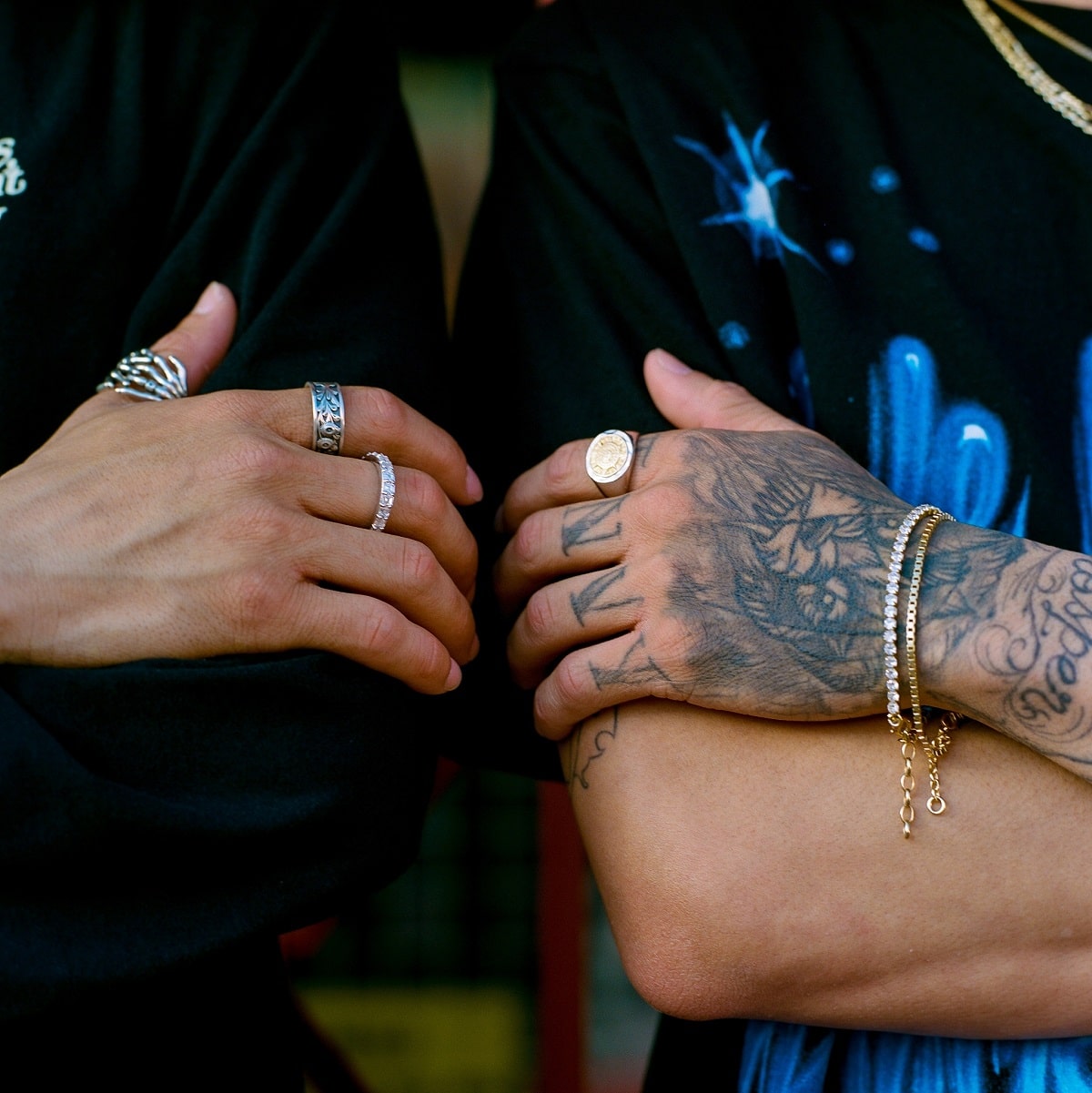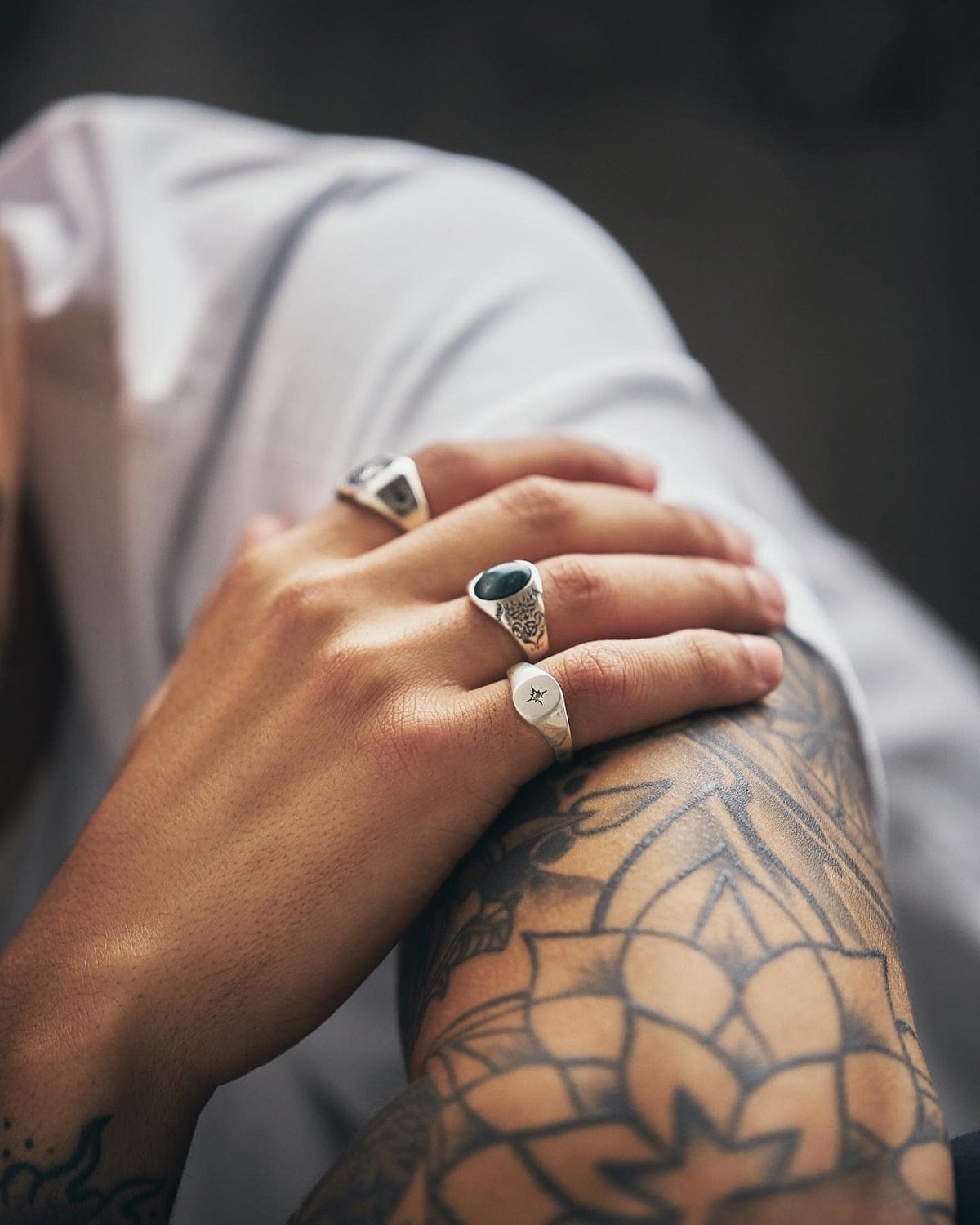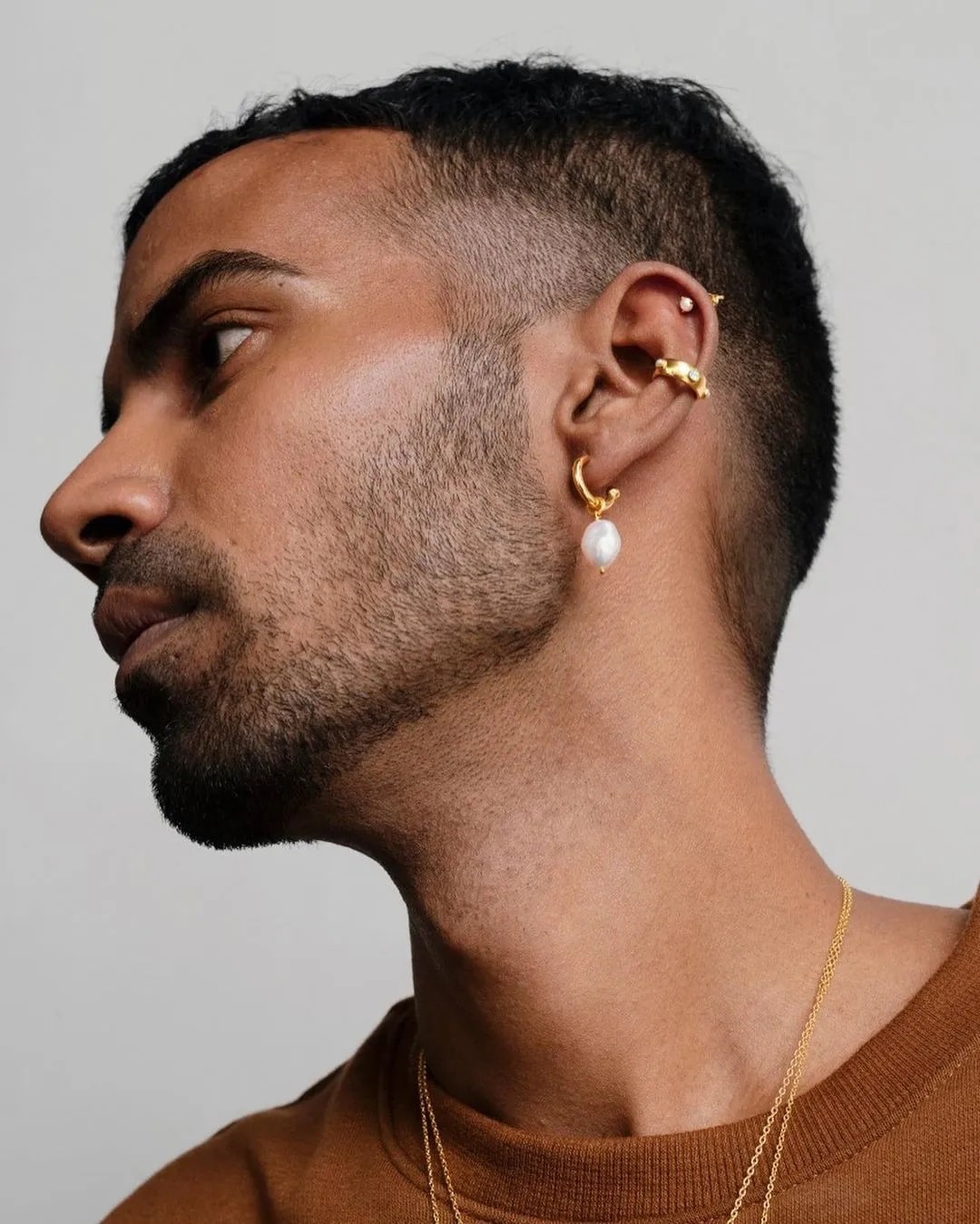1
HOME > Tips & Advice >
JEWELLERY WEARING TIPS FOR FASHION-FORWARD MEN
Written by Menswear Style in Tips & Advice on the 23rd June 2023

In the world of fashion, jewellery often acts as the period at the end of a well-constructed sentence; it completes the statement. For men, wearing jewellery can be a form of self-expression that allows you to break from the ordinary and exhibit your unique style. This comprehensive guide will help you navigate the world of men’s jewellery and provide tips on how to express yourself with confidence and flair.
Understanding The Basics Of Men’s Jewellery
Jewellery is not just a woman’s territory. The history of men’s jewellery dates back to the ancient civilisations, where men wore talismans, amulets, and rings to symbolise power, protection, and status. In modern times, men’s jewellery ranges from classic watches and cufflinks to bracelets, necklaces, earrings, and of course, rings. In fact, right now, we are living in a wild new era of high-end men’s jewellery. To understand the basics of men’s jewellery, it’s important to consider the three F’s: Form, Function, and Fashion.
Form pertains to the design, shape, and material of the piece, which contributes to its aesthetic appeal.
Function refers to the practical use of the jewellery piece. For instance, a watch tells time, cufflinks secure shirt cuffs, and a wedding ring symbolises a marital commitment.
Fashion, the most subjective factor, revolves around personal style, trends, and how the jewellery piece complements your outfit or the message you want to portray.

Navigating The World Of Men’s Wedding Rings
Navigating the world of men’s wedding rings can feel overwhelming with the wide array of choices. However, knowing what to look for can turn this potentially daunting task into an exciting journey of discovery. In terms of style, men’s wedding rings have come a long way from the traditional simple gold bands. Today, there are innumerable designs to choose from: sleek modern looks, vintage-inspired designs, intricate engravings, unique material combinations, and even rings studded with diamonds or other precious stones. However, your ring should be more than just visually appealing. Consider how comfortable it feels on your finger, especially if you’re not used to wearing rings. A wedding ring is worn daily, so comfort should be a high priority. The ring’s weight, size, shape, and texture can all affect how it feels to wear. Remember that a wedding ring is not just a piece of jewellery; it’s a symbol of your commitment. Select a ring that represents your personality, matches your lifestyle, and makes you feel proud and confident whenever you wear it. You should really spend some time looking at the different types of rings available. It will be in your best interest to look at customer-focused jewellery companies who have a wide range of rings available, such as Lorel Diamonds. These experts specialise in the design and manufacturing of luxury diamond jewellery, which means you should be able to find a ring that suits your needs!
How To Select The Perfect Wedding Ring
Selecting the perfect wedding ring can be a significant decision, considering it’s a piece you plan to wear for the rest of your life. You should first consider your lifestyle. If your job involves manual labour or using your hands frequently, a ring with a simple design and a durable material like platinum or tungsten may be more suitable. Similarly, if you play sports or work out regularly, a comfort-fit design can accommodate swelling fingers. Your wedding ring should resonate with your personal style. Are you traditional or modern? Do you prefer simple elegance or a touch of flamboyance? Answering these questions can help narrow down your options. Like any major purchase, setting a budget before you start shopping can prevent you from overspending. Remember, the ring’s price does not determine its value, your emotional connection to it does. As with clothes, trying on different styles and sizes of rings can help you find the perfect fit. You might be surprised at what you end up liking!

The Types Of Metals Available
Understanding the various types of metals used in jewellery can help you make an informed decision when purchasing a piece, particularly a wedding ring. Here are some of the most common metals:
Gold: Traditional and timeless, gold is a favourite for wedding rings. It is usually measured in karats, with 24 karats being pure gold. However, because pure gold is too soft for daily weare, it is often alloyed with other metals to improve its strength. This results in different types of gold, such as yellow gold, white gold, and rose gold.
Silver: Silver is another classic choice for jewellery. It’s more affordable than gold but requires regular maintenance to prevent tarnishing.
Platinum: This silvery-white metal is extremely durable and resistant to tarnishing, making it a popular choice for wedding rings. It’s heavier than gold and hypoallergenic, making it an excellent option for people with sensitive skin.
Titanium: Lightweight, strong, and hypoallergenic, titanium is a modern choice for men’s rings. It has a distinctive dark grey colour and is resistant to scratching and corrosion.
Tungsten Carbide: Known for its incredible hardness and high scratch resistance, tungsten carbide is another contemporary choice. It has a weighty feel and is available in various colours, including white, grey, and black.
Palladium: Similar to platinum but lighter and less expensive, palladium is becoming increasingly popular. It’s hypoallergenic and resistant to tarnish and wear.
It’s important to consider the properties of these metals, such as durability, care requirements, and your personal aesthetic preference when making your selection.
How To Wear Different Jewellery
Now let’s spend some time talking about how you can actually wear this jewellery! Wearing jewellery is an art form, a reflection of your personal style and the mood you wish to convey. Just look at the amount of male celebrities who wear jewellery these days. Here’s how to wear different types of jewellery with confidence and style.
Rings: Apart from your wedding band, you can experiment with signet rings, stacking rings, or statement rings. Just remember, balance is key. If you’re wearing a statement ring, let it be the star of your hand and keep other rings to a minimum.
Bracelets: Bracelets can add a touch of elegance or ruggedness to your outfit, depending on their design. Leather bracelets project a masculine, rugged look while metal bracelets or cuffs lend a more refined edge.
Necklaces: A simple chain can enhance a casual look, while a pendant necklace can serve as a conversation starter. Remember, the length and thickness of the necklace should be in proportion with your body frame.
Earrings: If earrings are your thing, go for it. Studs are a classic choice, but you can also consider hoops or barbell designs for a more edgy look.
Watches: A watch is more than a timekeeping device; it’s a statement about your personality. From sleek, minimalist designs to bold, complex chronographs, choose a watch that matches your personal style and the occasion. In all of these cases, remember to wear what feels right for you. Confidence is the best accessory you can wear.

Jewellery Care Explained
Once you’ve carefully selected your pieces of jewellery, maintaining their condition is crucial to ensure their longevity. Regular cleaning is necessary to maintain the shine and lustre of your jewellery. However, the cleaning method can vary based on the material. For example, warm soapy water and a soft brush can work for most metals, but some gemstones may require specific cleaning methods. Always check the manufacturer’s instructions or consult a jeweller if you’re unsure. Store your jewellery in a dry, cool place, ideally in separate compartments or cloth pouches to avoid scratches. Never store jewellery in a bathroom, as the humidity can accelerate tarnishing, particularly for silver items. Always handle your jewellery with clean hands. Try to put on your jewellery after applying any lotions, perfumes or hairsprays, as these can cause build-up or damage. For pieces with gemstones, regular checks for loose settings can help prevent loss. If a setting seems loose, take it to a professional for repair. Regular professional servicing is recommended, particularly for high-value items or pieces with sentimental value. This typically includes cleaning, checking for any necessary repairs, and re-polishing.
Match The Rest Of Your Outfit
Choosing jewellery that complements your outfit can significantly enhance your overall look. For formal events, less is often more. A classic watch, cufflinks, and your wedding band may be all you need. On the other hand, casual or festive occasions can allow for more creativity and layering of pieces. While metals typically go well with any colour, you can choose to match warmer toned jewellery (like gold or rose gold) with warm-coloured clothing and cooler toned jewellery (like silver or white gold) with cool-coloured clothing for a harmonious look. The style of your shirt’s neckline and the type of necklace should balance each other. For example, a V-neck shirt works well with a chain that has a pendant, while crew necks pair well with chokers or shorter chains. If you’re wearing a watch and a bracelet on the same wrist, ensure they’re of a similar style or material to create a cohesive look. While mixing metals can show off your style savvy, beginners might find it easier to stick with one metal at a time to ensure a coordinated look. Remember, these are not strict rules, but guidelines to help you get started. Your personal style should always be the deciding factor when it comes to wearing jewellery. Express yourself, and don’t be afraid to push the boundaries.

Trending
2
3
4
5
6
7
8
9
10









